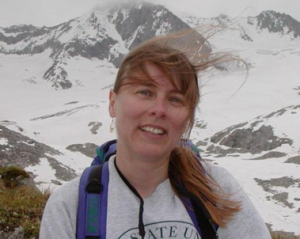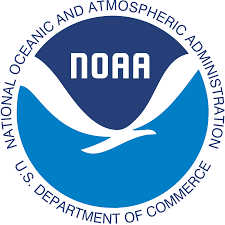Karin A. Forney
Research Affiliate
Department: NOAA/SWFSC Marine Mammal and Turtle Division
Contact:
email: karin.forney@noaa.gov
phone: (831) 771-4155
office: Norte 56
Biography:
As a Research Biologist with the Marine Mammal and Turtle Division at NOAA’s Southwest Fisheries Science Center, Karin has conducted diverse studies on the abundance, distribution, ecology, fishery bycatch, and status of 20+ species of cetaceans, and pinnipeds in the eastern and central North Pacific Ocean, with emphasis on harbor porpoise, false killer whales, and other small cetaceans. She also collaborates with Scott Benson on studies of endangered leatherback turtles. Her research involves field research in small aircraft and aboard research vessels, as well as quantitative analyses and modeling in support of species management and conservation. Additional responsibilities include writing or co-authoring annual Stock Assessment Reports for Pacific Marine Mammal Stocks and working with multi-stakeholder groups to address bycatch and other management needs. She received a Master’s degree in Biology from U. C. San Diego and a PhD in Biological Oceanography from Scripps Institution of Oceanography.
Curriculum Vitae:
Research Interests:
- Ocean variability and its effect on marine mammals and other marine vertebrates
- Habitat-based predictive models of cetacean distribution and abundance
- Assessment and mitigation of human-caused mortality and injury of protected species
- Methods for estimating marine animal abundance and evaluating population trends
Selected Publications
- Forney KA, B Southall, E Slooten, S Dawson, AJ Read, RW Baird, RL Brownell Jr. 2017. Nowhere to go: Noise impact assessments for marine mammal populations with high site fidelity. Endangered Species Research, Special Issue "21st Century Paradigms for Measuring and Managing the Effects of Anthropogenic Ocean Noise". doi: 10.3354/esr00820
- Jacobson EJ, KA Forney, J Barlow. 2017. Using paired visual and passive acoustic surveys to estimate passive acoustic detection parameters for harbor porpoise abundance estimates. Journal of the Acoustical Society of America 141, 219, doi: 10.1121/1.4973415
- Becker EA, KA Forney, PC Fiedler, J Barlow, SJ Chivers, CA Edwards, AM Moore, JV Redfern. 2016. Moving towards dynamic ocean management: How well do modeled ocean products predict species distributions? Remote Sensing 2016. 8, 149; doi:10.3390/rs8020149
- Eguchi T, SR Benson, DG Foley, KA Forney. 2016. Predicting overlap between drift gillnet fishing and leatherback turtle habitat in the California Current Ecosystem. Fisheries Oceanography, doi:10.1111/fog.12181.
- Forney, KA, EA Becker, DG Foley, J Barlow, EM Oleson. 2015. Habitat-based models of cetacean density and distribution in the central North Pacific. Endangered Species Research 27: 1–20. [doi: 10.3354/esr00632]
- Bradford AL, KA Forney, EM Oleson, and J Barlow. 2014. Accounting for subgroup structure in line-transect abundance estimates of false killer whales (Pseudorca crassidens) in Hawaiian Waters. PLoS ONE 9(2): e90464. doi:10.1371/journal.pone.0090464
- Benson SR, T Eguchi, DG Foley, KA Forney, H Bailey, C Hitipeuw, BP Samber, RF Tapilatu, V Rei, P Ramohia, J Pita, PH. Dutton. 2011. Large-scale movements and high-use areas of western Pacific leatherback turtles, Dermochelys coriacea. Ecosphere. doi:10.1890/ES11-00053.1
- Forney KA, DR Kobayashi, DW Johnston, JA Marchetti, MG Marsik. 2011. What’s the catch? Patterns of cetacean bycatch and depredation in Hawaii-based pelagic longline fisheries. Marine Ecology 32:380–391 [doi:10.1111/j.1439-0485.2011.00454.x]



